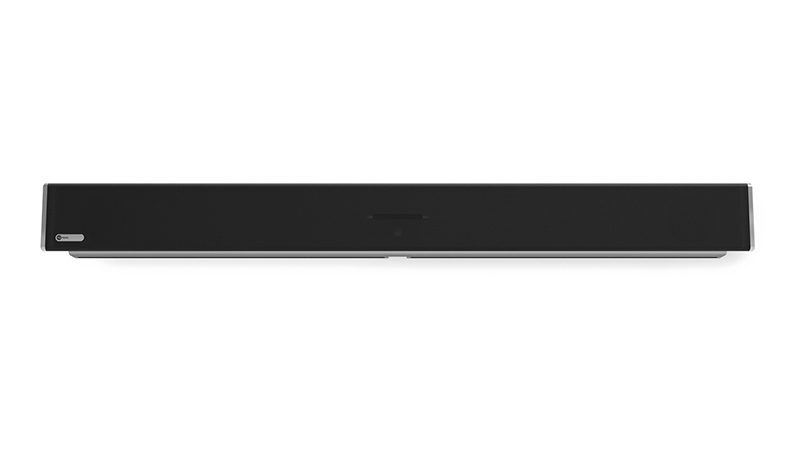
Remote collaboration leads to aha moments at the University of Missouri
The University of Missouri College of Education draws on its 150-year history to prepare future teachers for the demands of the 21st-century classroom. A key part of that involves showing them how technology can transform learning and improve the quality of online collaboration.
The College of Education’s recent implementation of Nureva visual collaboration solutions and the HDL300 audio conferencing system is designed to accomplish both. The university is using the combined power of the products to enhance the learning experience for student teachers and expand the professional development and outreach services it provides to teachers and school districts across the state.
Modelling hands-on learning
Since the collaboration and conferencing systems were installed over the summer, the priority has been to get the technology into the hands of student teachers and to train faculty members to use it to model hands-on learning.
“We want pre-service teachers to experience the same kind of teaching that they’ll be using out in the field,” says Christie Terry, director of eMINTS National Center, a professional development and outreach centre based at the College of Education. Along with helping faculty members incorporate technology into their coursework, the centre works with teachers and school districts across Missouri, connecting them to resources and providing guidance on better ways to use technology to enrich learning.
The dual Nureva™ Wall system covers an entire wall in a new Nureva Collaboration Room and IT Director Seth Lammers says its 20′ (6.1 m) interactive digital canvas is making a big impression. “The initial size of the system is what people notice first,” says Seth. “As soon as you turn on the two projectors, they are amazed. Then you start Span™ software and they see the touch interaction – people are hooked.”
After that happens, Christie says it doesn’t take long for educators to go from “Wow” to “What if” as they start imagining all the things they can do with solutions in their own teaching. “That’s the part that gets me excited,” she says. “It gives them that aha moment when they understand what it really feels like to be an engaged learner.”
Using technology to level the playing field
Along with teaching and research, the College of Education’s mission includes providing outreach to rural school districts. Many of these districts are in remote locations where teachers often struggle to access the specialised resources and expertise they need to support students.
Dean Kathryn Chval sees technology playing a key role in expanding access and helping all students become more successful. “Traditional classrooms must be transformed into flexible, just-in-time, technology-supported environments,” says Kathryn.
She also thinks innovative learning spaces and technology tools like Span software can bring people together to explore solutions to some of the big issues facing education, such as budget constraints, a shortage of teachers and the imbalance in education access and opportunities. “The Span system is a critical tool that will enable us to connect our faculty, staff and students with others who are committed to building teams who want to solve grand challenges in education.”
The College of Education supports school districts through partnerships, research projects and professional development. Many of the classroom teachers that the university’s faculty experts work with are too far away to collaborate face-to-face, so most of their interactions happen online, over distance. Christie Terry expects the Nureva Wall, Span software and HDL300 to make that collaboration more interactive and effective.
Having real conversations about complex challenges
The technology previously used to support remote collaboration didn’t always deliver a great experience. Participants sometimes had to juggle multiple software applications, struggle to hear each other and interactions felt stilted and unnatural. Seth Lammers hopes that will change with the dynamic, real-time collaboration that Span software enables and the sound clarity provided by the HDL300 system’s 8,192 virtual microphones.
“The HDL300 was the perfect solution for remote collaboration. We didn’t have to install microphones around the room because it was able to pick up sound from the very back of the room,” he says. The result has been a more natural and productive remote collaboration experience for everyone.
The positive feedback is getting more faculty members interested in using the solutions in their outreach work with local schools. Christie Terry says one professor recently used them for a distance collaboration session with teachers on an anti-bullying initiative and was “extremely excited about it.” He now wants more professional development so he can make the collaboration experience even better.
Christie says one of the reasons people like using Nureva products is because they’re set up to work the way they naturally want to collaborate. She also thinks they’re ideally suited for the kind of complex challenges that educators are trying to solve, where the process is as important as the solution itself. With Span software, every idea can be tracked and the HDL300 system ensures every word can be heard.
“We’re capturing all of that conversation, which is very important and is often lost in big group discussions.” She says it means participants get a holistic view of how to solve problems using a collaborative approach.
Exploring more ways to make an impact
Although it’s still new, the College of Education’s collaboration room has already become a dynamic, innovative space where technology is helping educators better prepare student teachers and make a real difference in the lives of students, especially those in disadvantaged schools.
Kathryn Chval thinks it’s just the beginning.
“It has just been incredible to see how this innovation has inspired new ideas and solutions related to teaching and learning. It’s reaching new audiences that have been limited by geography, finances or human resources,” says Kathryn. “The impact will be extraordinary.”
